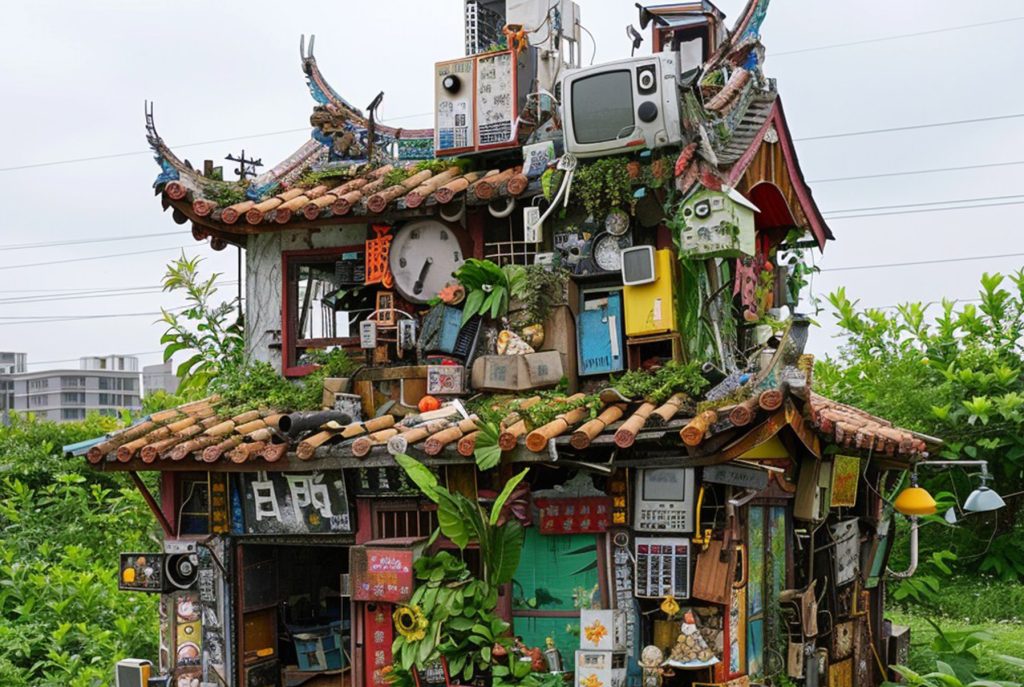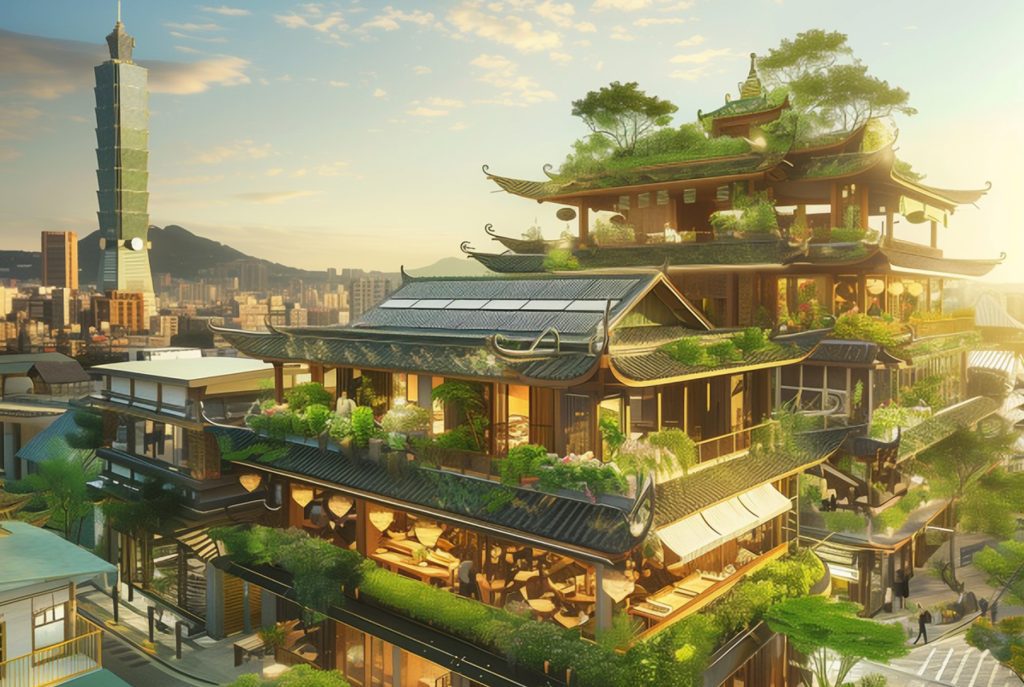「臺灣文化與永續發展:AI視覺創作之明信片設計競賽」
佳作展示
「文化十字路口」
作品介紹


佳作
台灣南波萬–陳禹彤
國立臺北科技大學 資訊工程所
作品英文描述
“Cultural Crossroads” is a visual narrative in two parts that juxtaposes Taiwan’s sustainability challenges with a conceptualized solution. The first image captures a traditional building, burdened with technological refuse, standing as a stark symbol of the often overlooked environmental cost of progress. Amidst this chaos, the greenery succumbs to electronic waste, reflecting the disregard for nature’s sanctity in the wake of rapid modernization. The second image offers a stark contrast, presenting an idyllic version of Taiwan where green technologies revitalize cultural landmarks. Here, a traditional structure thrives with a rooftop garden, its form augmented with solar and wind energy, embodying a successful merger of heritage and sustainability.
創作動機
Inspired by Taiwan’s rich cultural heritage and the pressing need for sustainable development, “Cultural Crossroads” seeks to provoke a dialogue about our current environmental trajectory. The motivation behind these images is to spotlight the tension between tradition and innovation, questioning our collective responsibility in fostering a future that is environmentally sound and culturally rich. This visual dichotomy serves to remind us that while technology can lead to cultural erosion, it also holds the power to create a self-sustaining ecosystem that honors our past.
心得與反思
Reflecting on “Cultural Crossroads,” it becomes clear that the path to sustainability is complex, requiring a delicate balance between preserving traditions and embracing innovation. The first image elicited a deep concern for the unchecked technological advancement that threatens our cultural and environmental heritage. However, crafting the second image, a vision of an eco-friendly Taiwan, provided a hopeful counterpoint that harmonized progress with preservation. This journey has reinforced my belief in the necessity of sustainable solutions that integrate respect for our cultural lineage with the innovations of the present.
